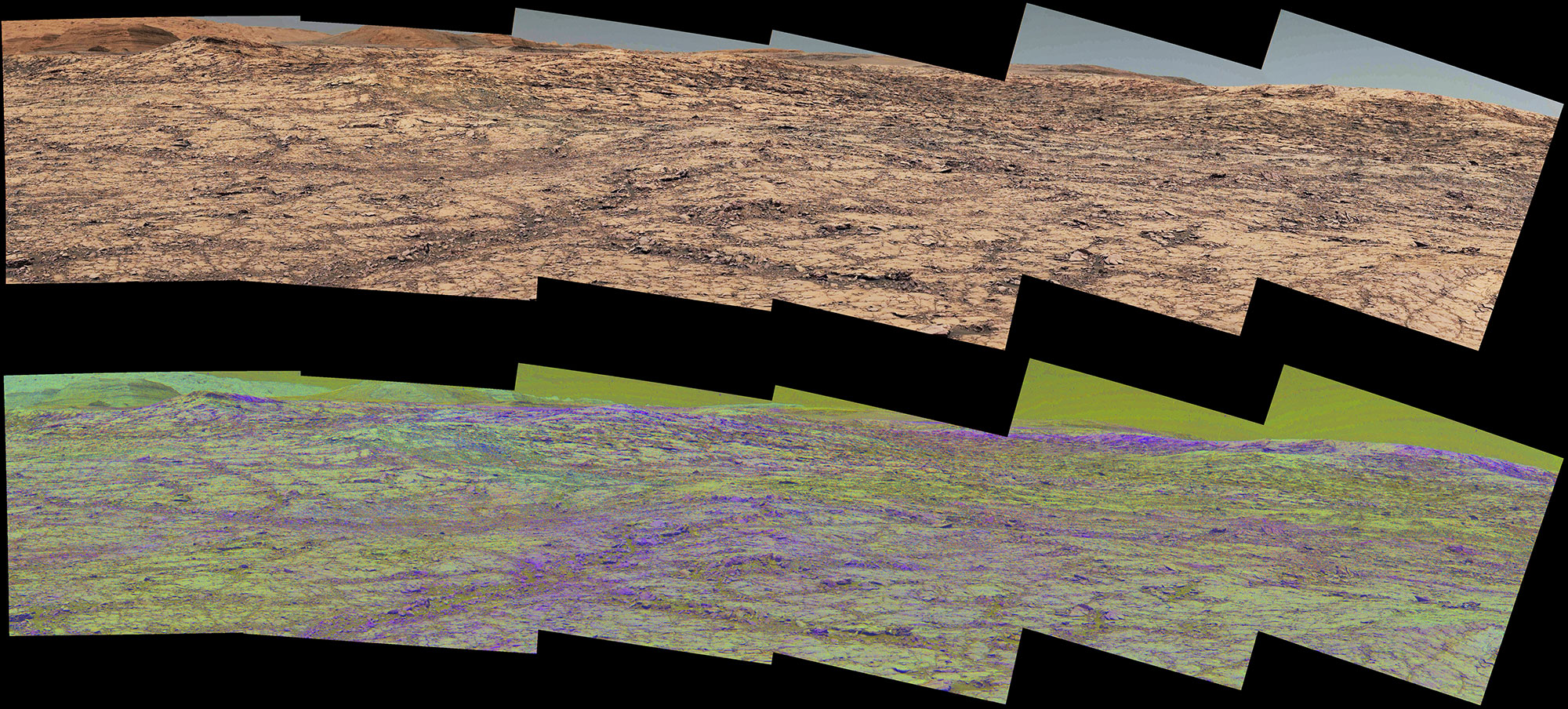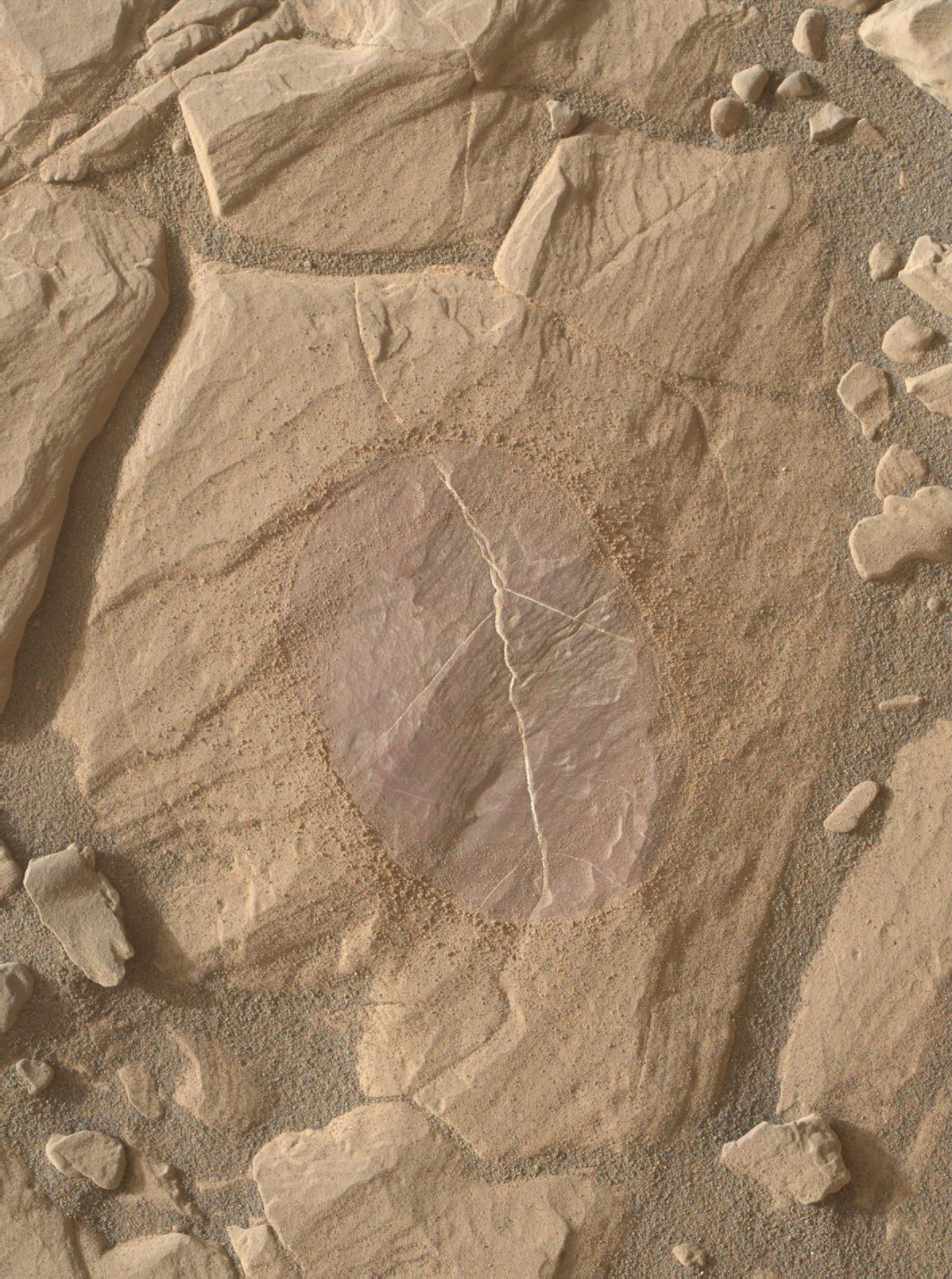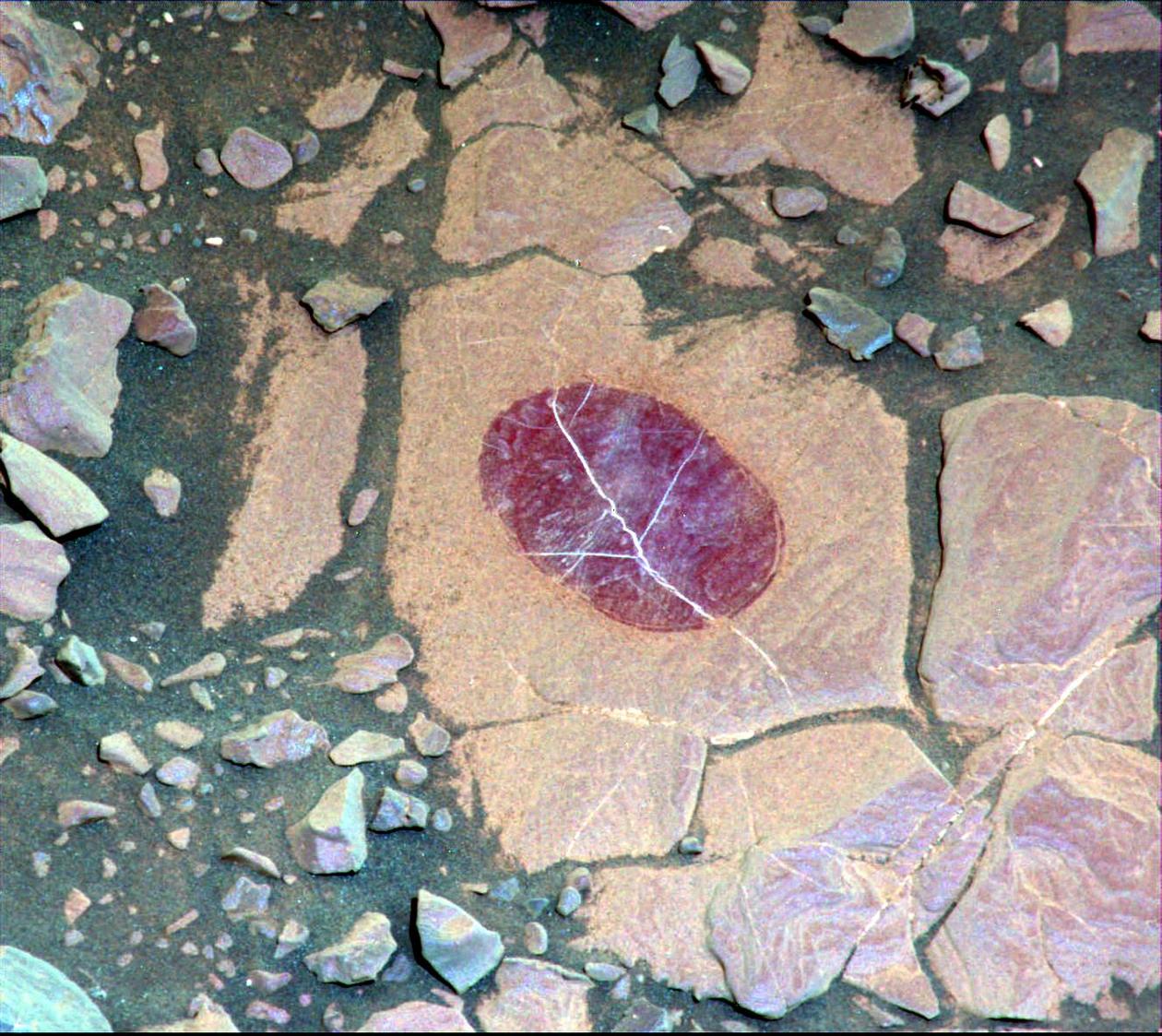Curiosity Rover Uses Color Detectors While Climbing Ridge on Mars

NASA's Curiosity rover is putting its color-discerning capabilities to full use as it treads up a steep Martian ridge on lower Mount Sharp.
Curiosity began climbing Vera Rubin Ridge in early September and is using its Mast Camera (Mastcam) to identify variations in the terrain ahead, which will help the rover's handlers map a path up the steep slope, according to a statement from NASA.
"We're in an area where this capability of Curiosity has a chance to shine," Abigail Fraeman of NASA's Jet Propulsion Laboratory, who leads planning for the mission's investigation of Vera Rubin Ridge, said in the statement. [Curiosity Rover Climbing Steep Martian Ridge (Photos)]

Curiosity is equipped with special filters that can identify certain minerals in the bedrock, as well as a spectrometer that sorts light into thousands of wavelengths. Some of the Mastcam's science filters are used to detect certain minerals based on the wavelengths of light that are either absorbed or reflected. For example, the rover's camera can detect the iron-oxide mineral hematite, which is believed to be abundant in the upper reaches of the Vera Rubin Ridge, according to the statement.
Prior to Curiosity landing on the Red Planet in 2012, NASA scientists first detected evidence of hematite on the Vera Rubin Ridge using spectrometer observations from orbit. The mineral usually forms in wet environments, so its presence could provide clues about the planet's watery past, NASA officials said.
"As we approached the ridge and now as we're climbing it, we've been trying to tie what was detected from orbit to what we can learn on the ground," Danika Wellington, Curiosity science team member from Arizona State University, said in the statement. "It's still very much a work in progress. The extent to which iron-bearing minerals here are oxidized relates to the history of interactions between water and rock."
Curiosity also has a chemistry and camera instrument called the ChemCam. Although this instrument generally uses a laser to identify chemical elements in rocks, it too has color-filtering abilities that can be used to identify the composition of rocks and target minerals across large landscapes.
Get the Space.com Newsletter
Breaking space news, the latest updates on rocket launches, skywatching events and more!
"The colors of the rocks on the ridge are more interesting and more variable than what we saw earlier in Curiosity's traverse," Jeffrey Johnson, a scientist from the Johns Hopkins University Applied Physics Laboratory, said in the statement.

Hematite absorbs some wavelengths of green light and reflects red and blue light, which gives the terrain a purplish tint in color images captured by Curiosity. The additional color-discerning capabilities of Curiosity's Mastcam and ChemCam capture a clear view of hematite deposits that are present in the bedrock.
"We're using these multi-spectral and hyper-spectral capabilities for examining rocks right in front of the rover and also for reconnaissance — looking ahead to help with choosing where to drive for closer inspection," Johnson said.
In fact, Mastcam images taken on Sept. 12 identified hematite in an area that was at the time a few days' drive away, in regions around fractured bedrock. Upon further investigation, NASA scientists found that the mineral was more widely distributed than previously thought and is covered by a layer of tan dust in some areas, causing the hematite to appear patchier than it actually is. The discovery suggests the mineral may have formed early in Mars' ancient past, according to the statement from NASA.
Follow Samantha Mathewson @Sam_Ashley13. Follow us @Spacedotcom, Facebook and Google+. Original article on Space.com.
Join our Space Forums to keep talking space on the latest missions, night sky and more! And if you have a news tip, correction or comment, let us know at: community@space.com.

Samantha Mathewson joined Space.com as an intern in the summer of 2016. She received a B.A. in Journalism and Environmental Science at the University of New Haven, in Connecticut. Previously, her work has been published in Nature World News. When not writing or reading about science, Samantha enjoys traveling to new places and taking photos! You can follow her on Twitter @Sam_Ashley13.









